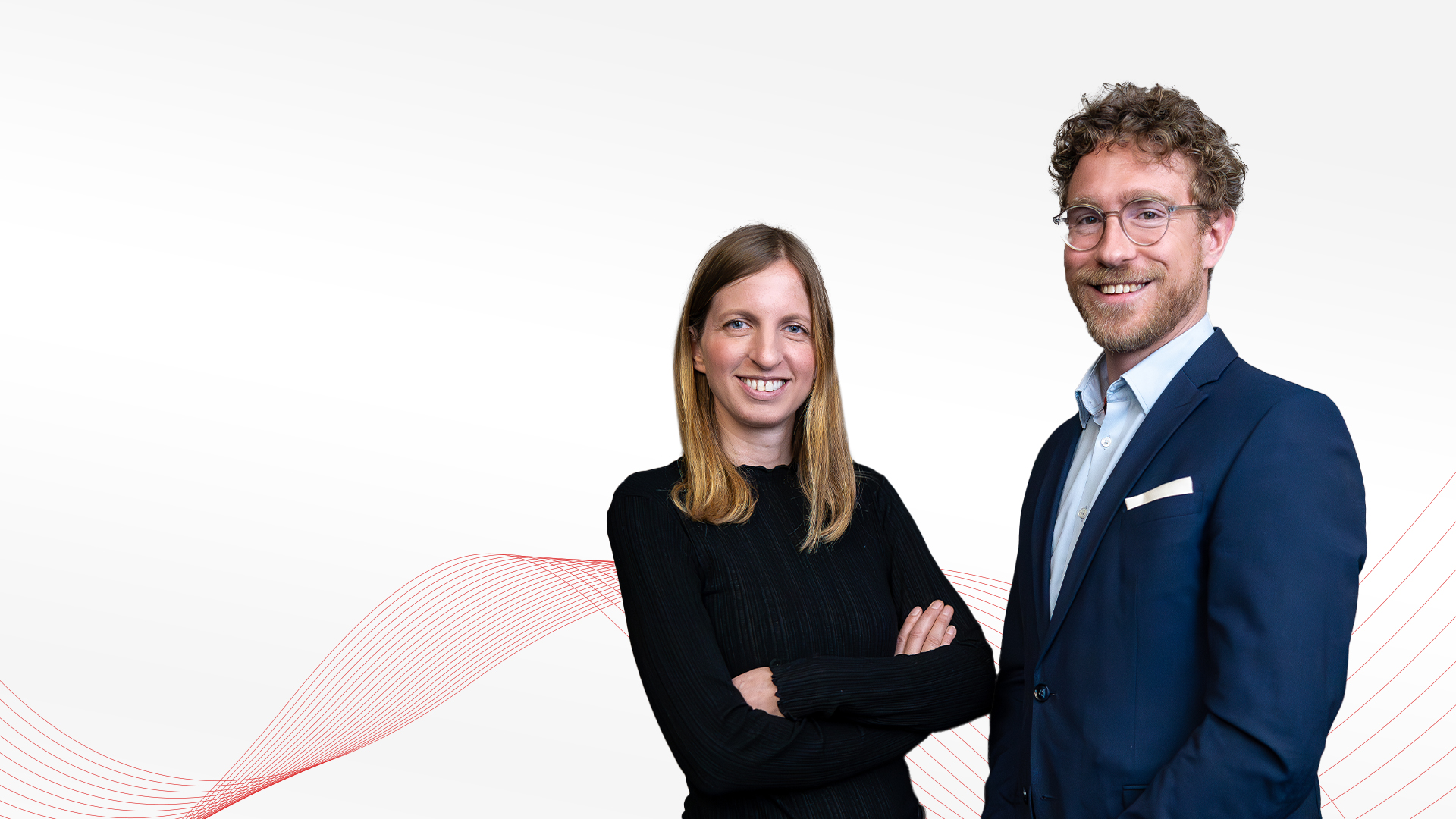Open ecosystems are the key to token market growth
No traditional stock exchange group in Europe has done more to embrace cryptocurrencies and digital assets than the Börse Stuttgart Group (BSG). Investors can trade the leading cryptocurrencies not just on the regulated Börse Stuttgart Digital Exchange but via its app-based retail broker BISON. The entrepreneurial approach of BSG is now being extended to Switzerland, where the company first expanded via the acquisition of the BX Swiss stock exchange in Zurich in 2017. BSG sees in Switzerland an opportunity to develop secondary market trading, not just of cryptocurrencies but of tokenised securities. In 2022 BX Swiss took part in a proof-of-concept organised by the Swiss Capital Markets Technology Association (CMTA), in which tokenised securities were traded on BX Swiss and trades settled in Swiss francs via a blockchain but it has since moved into full delivery mode. In May 2023, BX Digital was set up to offer institutional and retail investors a regulated blockchain trading system. Dominic Hobson spoke to Andreas Ruflin, Chief Digital Officer, BX Digital, about the strategy to convert cryptocurrency investors into token investors.
Hobson: Who owns your organisation, what are their expectations and how do they support your strategy?
Ruflin: BX Digital is owned by Börse Stuttgart Group (BSG), the sixth largest exchange group in Europe. BSG has a strong franchise in traditional capital markets. BSG is strategically extending its comprehensive cryptocurrency trading, brokerage and custody offering towards digital assets (what it calls Distributed Ledger Technology (DLT) securities), launching in Switzerland and expanding towards Europe. There is very close collaboration and strong synergy between BX Digital and BSG.
Hobson: Is it accurate to describe your organisation as an “exchange” where buyers meet sellers on your platform, as opposed to, say, investors meeting issuers as principal?
Ruflin: From a business point of view, that is correct. You can speak of an exchange in the meaning of running an order book where supply meets demand in investment products and market makers provide continuous liquidity between investors trading amongst each other in the secondary market. From a regulatory point of view BX Digital is called a “DLT trading facility,” as the term “exchange” is a word reserved for traditional centralised exchanges.
Hobson: You have explained that your focus is on secondary market trading and not primary market capital-raising. What are the reasons for this?
Ruflin: Secondary markets, trading and liquidity, are our DNA. Capital-raising has been traditionally the job of banks. In the future this role may be more and more driven also by the issuers themselves.
Hobson: You have described your operating licence as a “financial market infrastructure” licence. Exactly what does this licence entitle you to do in terms of both instruments and activities and accredited investors?
Ruflin: We will focus on tokenised equity, bonds, exchange traded products and derivatives without leverage. Trading participants will be regulated entities such as banks and securities dealers. The instrument universe will be expanded towards instruments which are not comparable to traditional securities.
Hobson: Are you seeking additional operating licences?
Ruflin: We have filed for a DLT trading facility license from the Swiss Financial Market Supervisory Authority (FINMA) It is pending approval now.
Hobson: Your blockchain network is “public” rather than “private” or “public permissioned.” What explains your choice?
Ruflin: A larger ecosystem, more interoperability, more liquidity, more services. In an “open (source) world,” people can build services on top of each other and exponentially magnify the value of the overall system.
Hobson: Which blockchain protocol do you use?
Ruflin: Ethereum and we are assessing alternative, additional blockchains.
Hobson: Do you work with a particular technology vendor?
Ruflin: Our trading system is based on what we already have in BSG. Custody is provided by our trading members. The on-chain settlement infrastructure is custom-built.
Hobson: In terms of the services you provide, issuance and settlement are on the public blockchain but registration and trading are not. Could you explain this division of labour between systems?
Ruflin: The order matching is taking place on our central order book. Settlement is done via DVP on public blockchain directly peer-to-peer between our trading members’ wallets.
Hobson: How do transactions settle? Is it “atomically”? And how do you deal with the cash leg of settlement? Is it off-chain via the conventional banking system, cash on-chain in tokenised form, or by direct or indirect connections to central bank Real Time Gross Settlement systems (RTGSs)?
Ruflin: The cash leg is cleared and settled via the Swiss Interbank Clearing (SIC) payments system which our system can instruct directly because we are a member of the Swiss National Bank SIC system.
Hobson: Do your issuance services include offering or writing smart contracts?
Ruflin: No. Tokenisation is done by other providers in the ecosystem. This increases the overall value of the ecosystem, as tokenisation partners can come from various asset classes, regions and origins to provide services.
Hobson: Do you provide financial advisory services to issuers?
Ruflin: No.
Hobson: You have described the type of issuers you seek as “regional.” Does that mean Europe or German-speaking Europe?
Ruflin: Given the fact that we start with settling in Swiss Francs (CHF) via SIC, and tokens have to be issued as ledger-based securities as defined by Swiss law, issuers will be more Swiss-centric. However, our regulations allow issuers to come from abroad. We have the ambition to scale our offering into Europe supported by our mother company, BSG.
Hobson: The types of issuers you seek includes companies and issuers of investment products and funds. What explains your choice of targets?
Ruflin: Our choice is driven by what we know we can create a liquid market for. However, we are also looking at fully new types of securitisation, such as direct ownership of fungible assets.
Hobson: You have described liquidity as “very important” rather than “crucial,” which is counter-intuitive for a secondary market. Can you explain your reasoning?
Ruflin: Liquidity is crucial. However, as a marketplace, our primary task is to provide a technology platform upon which trading members and market makers can provide their liquidity pools.
Hobson: Which type of market makers are you targeting as partners of your exchange – do you also look for automated market-makers (AMMs)?
Ruflin: At the start, we will add traditional market makers who understand the specific characteristics of the asset classes. AMMs are not foreseen at the moment.
Hobson: What types of investors do you think will be most interested in trading tokens on your exchange. Will this encompass mainly retail or also professional and institutional investors such as family offices, asset managers and even pension funds?
Ruflin: We get interest from both the retail and the institutional side. But our business model consists of going via the banks which then go to the investors, so we do not speak to the investors ourselves directly. We reach investors our trading members, which we attract by leveraging existing connectivity and our trusted position within Europe. Ultimately, what is most important to us now is the type of issuers and banks that connect to our exchange, since they bring the investors to us.
Hobson: Your choice of target asset classes (equity, bonds, exchange traded products and derivtives) without leverage derivtives is fairly comprehensive. But which of these asset classes are you focused on in the short term?
Ruflin: Equity is the primary focus in the short term.
Hobson: You have chosen not to provide custody services directly or work with a particular third-party custodian but to allow customers to use their own wallets. Why is that?
Ruflin: Custody is provided by our trading members and is not our traditional capacity. We believe in a decentralised, open ecosystem set-up, where custody should be as close as possible to the investor who can choose the right solution for them. We are not positioning ourselves as a central securities depository (CSD).
Hobson: How is client cash handled by your organisation? Is it commingled with proprietary funds or held by an independent third-party bank?
Ruflin: As we do not offer custody, we do not need to handle cash. There is no need for pre-funding of accounts.
Hobson: What industry accreditations – such as International Standard on Assurance Engagements (ISAE) certificates- has your organisation secured?
Ruflin: We are promoting some tokenisation standards, such as the Capital Markets and Technology Association Token (CMTAT) framework in Switzerland.
Hobson: Your timetable to success (3-5 years) is not long but not short either. Are you fully funded for that timescale?
Ruflin: Börse Stuttgart is funding BX Digital with a long-term strategic plan. We are growing step by step, delivering and expanding our services, along our strategic roadmap.
More news from BX Digital
BX Digital, part of the Boerse Stuttgart Group, and Ondo Finance, a leading U.S.-based leader in the tokenization of real-world assets (RWAs), have entered into a partnership.
BX Digital is pleased to announce the appointment of Samuel Bisig as Chief Technology Officer (CTO) and new member of the Executive Board.

